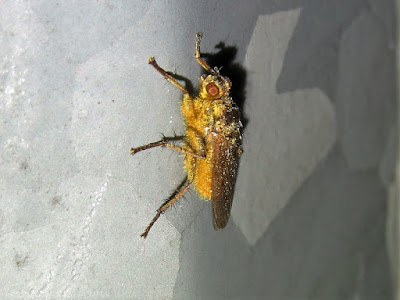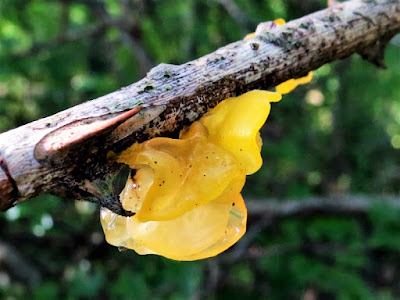8.0°C > 11.0°C: Mostly clear with patchy thin high cloud. Early mist over water in light S breeze again, increasing light / moderate SSW. Excellent visibility..
Sunrise: 07:15 BST
* = a photo today
Priorslee Lake: 05:55 – 09:15
(220th visit of the year)
Highlight today was the Common Kestrel that flew high E at 07:50. I only noted this bird because I was following three Cormorants flying W to check that none was peeling off to return to the lake. I noted a medium / large bird flying towards me and it turned out to be my first Common Kestrel of the year here. It carried straight over flying strongly. My only other sighting in the area was in Spring along Woodhouse Lane when I saw one hovering well to the N across the other side of the A5 (and where they are now doing yet more building). Species #108 here this year for me.
Other bird notes:
- The other ringed cygnet is blue Darvic 7JVI. All four cygnets were flying strongly together and are now adept at making turns.
- Smaller number of Black-headed Gulls today because I did not look at the football field or the academy playing fields where they assemble first thing. Where many of them then disperse to is a mystery.
- I logged just under 500 large gulls flying from the N / NW. At least 100 of these were far too far to the E to be likely to circle around and stop off at the lake. Another 100 or so flew in company of departing Jackdaws and Rooks and I was too busy counting these to be certain where the gulls were going. At least some circled back to the lake.
- As yesterday my count of Herring and Lesser Black-backed Gulls includes only later arrivals and ignores any that might be left-overs from the earlier arrival.
- Two Jays were seen flying high SW. Another seemed to come out of the copse in the SE corner of the lake where they bred: this too circled around and flew off high SW as if it too was a migrant. One other bird left the same area and flew long along the bushes at the S side as the residents often do..
Overhead:
- 2 Canada Geese: duo outbound
- 4 Greylag Geese: duo outbound; duo inbound
- 3 small ducks, probably Tufted Ducks at 06:00: too dark to ID
- 2 Feral Pigeons: together
- 209 Wood Pigeons
- 1 Collared Dove
- 1 Herring Gull
- 23 Lesser Black-backed Gulls
- >100 large gulls: see notes
- 3 Cormorants: together
- 1 Common Buzzard
- *1 Common Kestrel
- 2, perhaps 3, Jays: see notes
- 178 Jackdaws
- 151 Rooks
- 2 Skylarks again
- 8 Pied Wagtails
- 3 Meadow Pipits
- 1 Linnet
Warblers noted:
- 2 Chiffchaffs: one in brief song
Count from the lake area:
- *2 + 4 (1 brood) Mute Swans
- 1 Canada Goose: arrived and departed
- 10 (6♂) Mallard
- 3 (1♂) Tufted Duck
- 10 Moorhens
- 67 Coots
- 1 Little Grebe: immature?
- 3 Great Crested Grebes
- >180 Black-headed Gulls
- 7 Herring Gulls
- *20 Lesser Black-backed Gulls
- c.390 large gulls: see notes
- 1 Cormorant: arrived
- 1 Grey Heron
At / around the street lamps pre-dawn:
Moths:
None
Other things:
- 1 Plumed midge (Chironomus plumosus)
- *1 Yellow Dung Fly (Scathophaga stercoraria)
- *1 Common Froghopper (Philaenus spumarius)
- 1 Garden Spider (Arameus diadematus)
- 1 Stretch spider (Tetragnatha sp.)
Also noted later:
- Common Nettle-tap moth (Anthophila fabriciana)
- Common Wasp (Paravespula vulgaris)
- 1 Plumed midge (Chironomus plumosus)
- *1 Yellow Dung Fly (Scathophaga stercoraria)
- *1 Common Froghopper (Philaenus spumarius)
- 1 Garden Spider (Arameus diadematus)
- 1 Stretch spider (Tetragnatha sp.)
Also noted later:
- Common Nettle-tap moth (Anthophila fabriciana)
- Common Wasp (Paravespula vulgaris)
And again as the sunrise progresses.
One more for cloud enthusiasts.
An adult winter Lesser Black-backed Gull. A rather scruffy bird with many primaries missing as its moult progresses. The way the feet are sticking out indicates that most of the tail is missing From this angle it seems to have an unusually large bill.
Another 'record shot': my first Kestrel in the area this year. It was rather high up as it flew steadily E.
A species of fly I cannot recall having seen on any of the street lamps pre-dawn. It is a Yellow Dung Fly (Scathophaga stercoraria) just dusted with dew.
Another insect just dusted with dew. It is a Common Froghopper (Philaenus spumarius).
(Ed Wilson)
------------------------------------------------------------------------------------------------------
In the Priorslee Avenue tunnel pre-dawn:
Moth:
- *1 tbc
with:
- 2 Common Green Lacewing (Chrysoperia carnea)
- 1 possible Bordered Shieldbug (Legnotus limbosus)
- 1 Common Rough Woodlouse (Porcellio scaber)
- 1 Leiobunum rotundum/blackwalli harvestman
- plus various midges and rather fewer unidentified spiders than recently
- 2 Common Green Lacewing (Chrysoperia carnea)
- 1 possible Bordered Shieldbug (Legnotus limbosus)
- 1 Common Rough Woodlouse (Porcellio scaber)
- 1 Leiobunum rotundum/blackwalli harvestman
- plus various midges and rather fewer unidentified spiders than recently
I am getting help with the identification of this micro-moth.
Well I thought this was a small beetle but looking at the photo it is clearly a bug. It might be Bordered Shieldbug (Legnotus limbosus) but there is not enough detail in the photo to confirm this.
(Ed Wilson)
The Flash: 09:20 – 10:15
(198th visit of the year)
Highlight was the first Goosanders of the winter. Six apparently arrived while I was walking around and were close to Derwent Drive. All 'brownheads' at this time of year.
Other bird notes:
- A drake Teal was tucked up against the island.
- Some of the Tufted Duck were back from their day out at the lake yesterday. An increasing number of drakes can be readily identified as they start moulting in to breeding plumage.
- There were certainly two Grey Herons. I saw birds in three locations but was only able to see any two of them at any one time.
Birds noted flying over here:
- 2 Skylarks
Warblers noted:
(Ed Wilson)
------------------------------------------------------------------------------------------------------
The Flash: 09:20 – 10:15
(198th visit of the year)
Highlight was the first Goosanders of the winter. Six apparently arrived while I was walking around and were close to Derwent Drive. All 'brownheads' at this time of year.
Other bird notes:
- A drake Teal was tucked up against the island.
- Some of the Tufted Duck were back from their day out at the lake yesterday. An increasing number of drakes can be readily identified as they start moulting in to breeding plumage.
- There were certainly two Grey Herons. I saw birds in three locations but was only able to see any two of them at any one time.
Birds noted flying over here:
- 2 Skylarks
Warblers noted:
None
On /around the water:
- 25 Canada Geese
- 3 + 2 (1 brood) Mute Swan
- 26 (17♂) Mallard
- 1 (1♂) Teal
- *22 (7+♂) Tufted Duck
- *6 (0♂) Goosander
- 4 Moorhens only
- 25 Coots
- 2 + 3 (1 brood) Great Crested Grebes
- 21 Black-headed Gulls
- 2, possibly 3, Grey Herons
On the lamp poles:
- 25 Canada Geese
- 3 + 2 (1 brood) Mute Swan
- 26 (17♂) Mallard
- 1 (1♂) Teal
- *22 (7+♂) Tufted Duck
- *6 (0♂) Goosander
- 4 Moorhens only
- 25 Coots
- 2 + 3 (1 brood) Great Crested Grebes
- 21 Black-headed Gulls
- 2, possibly 3, Grey Herons
On the lamp poles:
Nothing found
Noted elsewhere:
- Honey Bee (Apis mellifera)
- Common Carder Bee (Bombus pascuorum)
- Common Wasp (Paravespula vulgaris)
- *Dock Bug (Coreus marginatus)
- *Sycamore Tarspot fungus (Rhytisma acerinum)
- *Jelly fungus, probably Exidia sp., possibly E. recisa
Noted elsewhere:
- Honey Bee (Apis mellifera)
- Common Carder Bee (Bombus pascuorum)
- Common Wasp (Paravespula vulgaris)
- *Dock Bug (Coreus marginatus)
- *Sycamore Tarspot fungus (Rhytisma acerinum)
- *Jelly fungus, probably Exidia sp., possibly E. recisa
This was a challenge. A small duck at extreme range tucked up against the island. The size in comparison with the Black-headed Gull provides a clue. It is just possible to make out the yellow marks on the green-sided rufous head that identify it as a duck Teal still moulting in to breeding plumage.
A collection of Tufted Duck. The bird on the right is certainly a drake. It is hard to be certain about any of the others though I suspect that the two in the middle are starting to moult in to drake plumage. For the moment I am only recording as drakes those I am certain about.
A brownhead Goosanders. At this date most Goosanders will look much like this whether they are ducks, drakes or immatures.
Two here. The bird wing-flapping is not an adult drake because on these the white panel in the wing extends forwards across the whole wing. So it is either an immature or an adult duck.
It will take more than one thin twig to hide this lurking Grey Heron.
A Dock Bug (Coreus marginatus): apparently my first at this site.
The black spots on the Sycamore leaf are caused by the Sycamore Tarspot fungus (Rhytisma acerinum). My first record of this fungus only because I have never previously bothered to look it up.
(Ed Wilson)
------------------------------------------------------------------------------------------------------
On this day can be found via the yearly links in the right-hand column.
Sightings from previous years without links are below
2013
Candles Landfill Site
1st-winter Yellow-legged Gull
(Tom Lowe)
2008
Trench Lock Pool
1st- winter Mediterranean Gull
c.150 Black-headed Gulls
15 Lesser Black-backed Gulls
1 Great Black-backed Gull
Shoveler
(Ed Wilson)
















